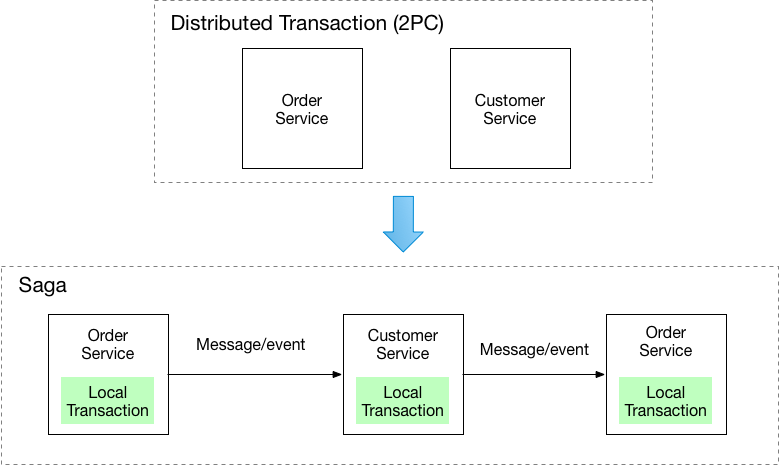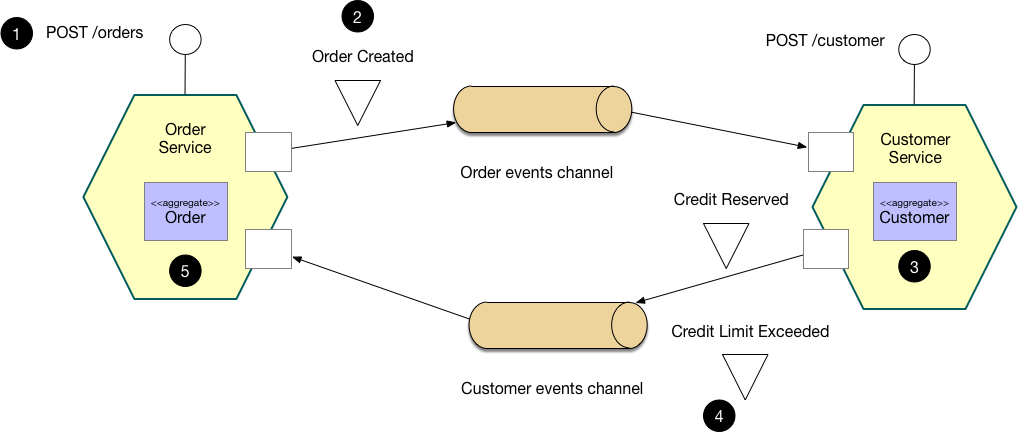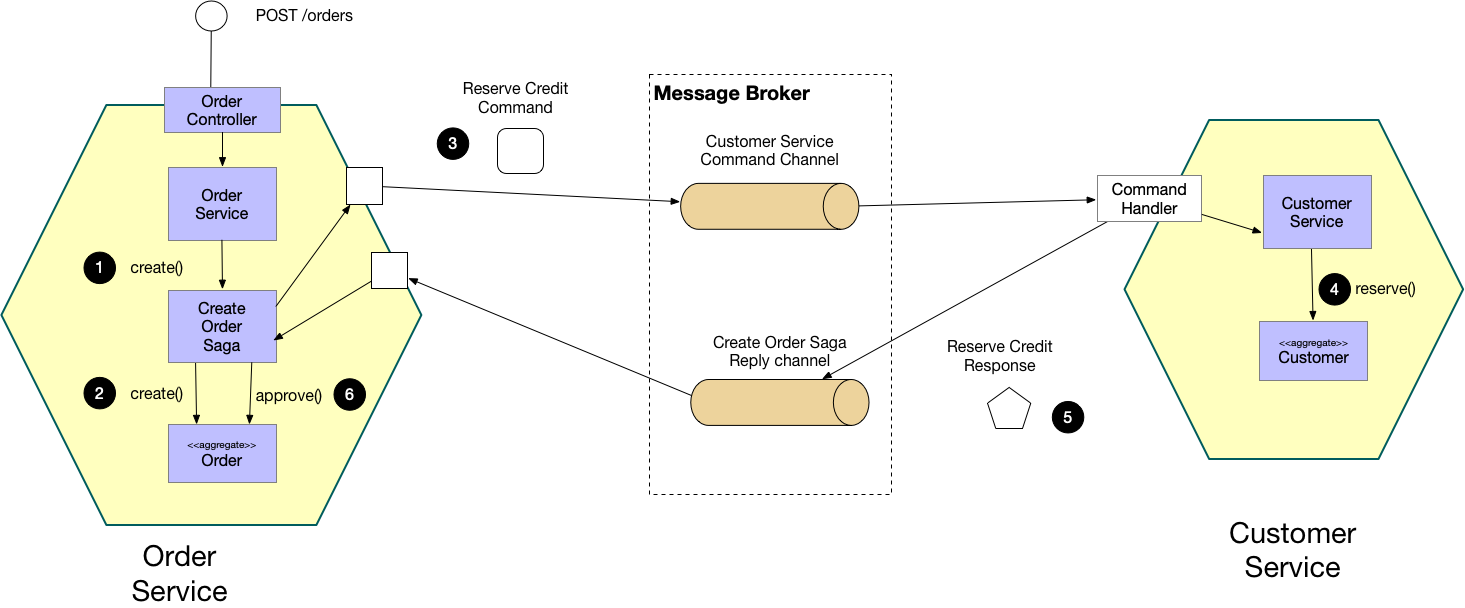Sagas
Mục Lục
Pattern: Saga
Want to learn more about this pattern?
Take a look at my self-paced, online bootcamp that teaches you how to use the Saga, API Composition, and CQRS patterns to design operations that span multiple services.
The regular price is $395/person but use coupon KGBJMRAM to sign up for $195 (valid until March 8th, 2023)

Context
You have applied the Database per Service pattern.
Each service has its own database.
Some business transactions, however, span multiple service so you need a mechanism to implement transactions that span services.
For example, let’s imagine that you are building an e-commerce store where customers have a credit limit.
The application must ensure that a new order will not exceed the customer’s credit limit.
Since Orders and Customers are in different databases owned by different services the application cannot simply use a local ACID transaction.
Problem
How to implement transactions that span services?
Forces
- 2PC is not an option
Solution
Implement each business transaction that spans multiple services as a saga.
A saga is a sequence of local transactions.
Each local transaction updates the database and publishes a message or event to trigger the next local transaction in the saga.
If a local transaction fails because it violates a business rule then the saga executes a series of compensating transactions that undo the changes that were made by the preceding local transactions.

There are two ways of coordination sagas:
- Choreography – each local transaction publishes domain events that trigger local transactions in other services
- Orchestration – an orchestrator (object) tells the participants what local transactions to execute
Example: Choreography-based saga

An e-commerce application that uses this approach would create an order using a choreography-based saga that consists of the following steps:
- The
Order Servicereceives thePOST /ordersrequest and creates anOrderin aPENDINGstate - It then emits an
Order Createdevent - The
Customer Service’s event handler attempts to reserve credit - It then emits an event indicating the outcome
- The
OrderService’s event handler either approves or rejects theOrder
Example: Orchestration-based saga

An e-commerce application that uses this approach would create an order using an orchestration-based saga that consists of the following steps:
- The
Order Servicereceives thePOST /ordersrequest and creates theCreate Ordersaga orchestrator - The saga orchestrator creates an
Orderin thePENDINGstate - It then sends a
Reserve Creditcommand to theCustomer Service - The
Customer Serviceattempts to reserve credit - It then sends back a reply message indicating the outcome
- The saga orchestrator either approves or rejects the
Order
Resulting context
This pattern has the following benefits:
- It enables an application to maintain data consistency across multiple services without using distributed transactions
This solution has the following drawbacks:
- The programming model is more complex.
For example, a developer must design compensating transactions that explicitly undo changes made earlier in a saga.
There are also the following issues to address:
-
In order to be reliable, a service must atomically update its database and publish a message/event.
It cannot use the traditional mechanism of a distributed transaction that spans the database and the message broker.
Instead, it must use one of the patterns listed below. -
A client that initiates the saga, which an asynchronous flow, using a synchronous request (e.g. HTTP
POST /orders) needs to be able to determine its outcome.
There are several options, each with different trade-offs:- The service sends back a response once the saga completes, e.g. once it receives an
OrderApprovedorOrderRejectedevent. - The service sends back a response (e.g. containing the
orderID) after initiating the saga and the client periodically polls (e.g.GET /orders/{orderID}) to determine the outcome - The service sends back a response (e.g. containing the
orderID) after initiating the saga, and then sends an event (e.g. websocket, web hook, etc) to the client once the saga completes.
- The service sends back a response once the saga completes, e.g. once it receives an
Related patterns
- The Database per Service pattern creates the need for this pattern
- The following patterns are ways to atomically update state and publish messages/events:
- Event sourcing
- Transactional Outbox
- A choreography-based saga can publish events using Aggregates and Domain Events
Learn more
- My book Microservices patterns describes this pattern in a lot more detail. The book’s example application implements orchestration-based sagas using the Eventuate Tram Sagas framework
- Take a look at my self-paced, online bootcamp that teaches you how to use the Saga, API Composition, and CQRS patterns to design operations that span multiple services.
- Read these articles about the Saga pattern
- My presentations on sagas and asynchronous microservices.
Example code
The following examples implement the customers and orders example in different ways:
TweetFollow @MicroSvcArch
Copyright © 2023 Chris Richardson • All rights reserved • Supported by Kong















![Toni Kroos là ai? [ sự thật về tiểu sử đầy đủ Toni Kroos ]](https://evbn.org/wp-content/uploads/New-Project-6635-1671934592.jpg)


